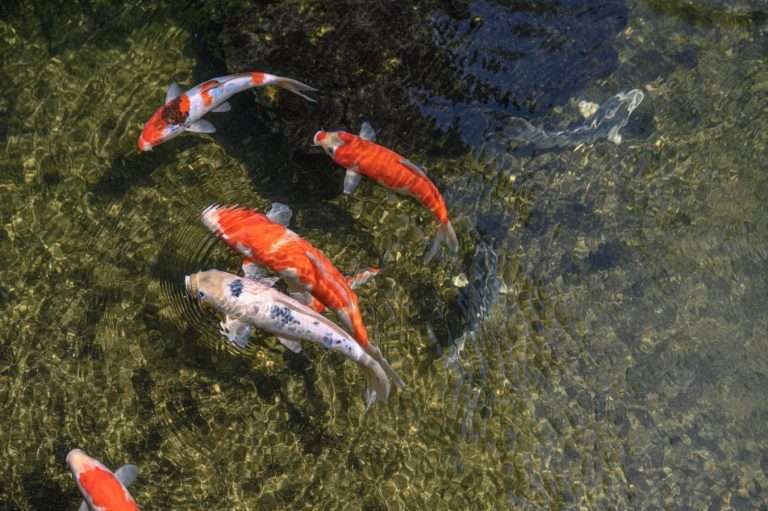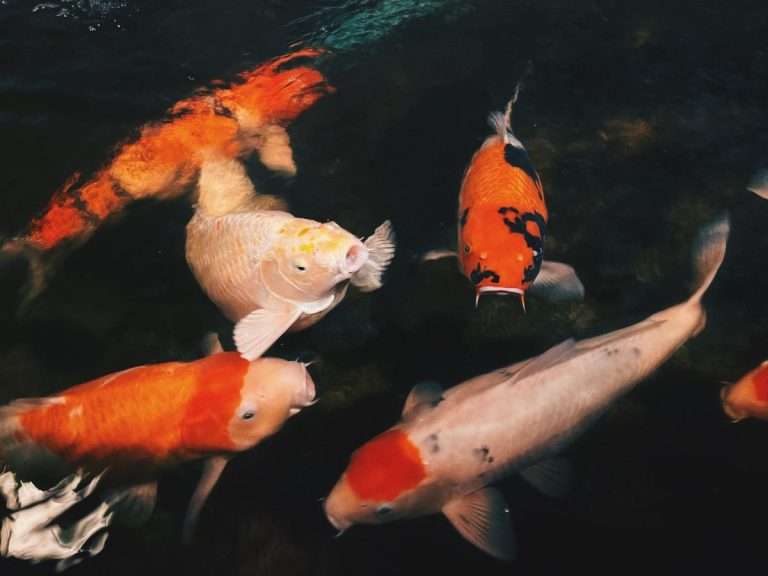Goldfish vs Koi vs Carp What Are The Differences?
Introduction: Goldfish vs Koi vs Carp
When it comes to ornamental fish, you might ask what the difference is between Goldfish vs. Koi vs. Carp. Koi, Carp, and Goldfish are among the most popular species in the world. These three fish types are often confused due to their similarities in appearance and behavior. This article will delve into the key differences between Koi, Carp, and Goldfish to help you understand their unique characteristics and choose the right fish for your needs.
1. Origins and Taxonomy
Koi: The Symbol of Prosperity and Good Fortune
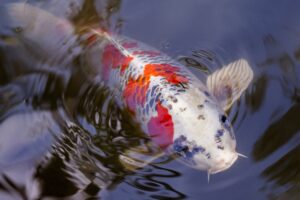
Koi (Cyprinus carpio) is a domesticated form of the common Carp, initially bred for their distinct color patterns in Japan. The term “Koi” is derived from the Japanese word “Nishikigoi,” which translates to “brocaded carp.” Koi are revered in Japanese culture and are often associated with prosperity, good fortune, and perseverance.
Carp: The Resilient and Adaptable Freshwater Fish
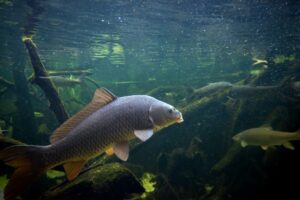
Carp (Cyprinus carpio) are a freshwater fish species native to Europe and Asia. They belong to the family Cyprinidae and are known for their adaptability to various environmental conditions. Carp are often found in lakes, ponds, and rivers and have been introduced to many parts of the world due to their importance as a food source and for recreational fishing.
Goldfish: The World’s Most Popular Pet Fish
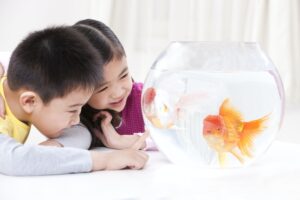
You might ask if are goldfish and koi the same. Goldfish (Carassius auratus) are also members of the family Cyprinidae, originating from East Asia. Over a thousand years ago, they were domesticated in China for their striking colors and graceful swimming patterns. Today, Goldfish are the most popular pet fish globally, available in various shapes, sizes, and color varieties.
2. Physical Differences: Color, Size, and Body Shape
Koi: Diverse Color Patterns and Larger Size
Koi are well-known for their diverse and vibrant color patterns, including red, white, black, blue, yellow, and orange. They have a streamlined, torpedo-shaped body and can grow up to 3 feet long. Koi also have barbels (whisker-like sensory organs) near their mouths, which help them detect food in murky waters.
Carp: Subdued Colors and Robust Bodies
Carp are generally more giant than Koi, reaching up to 4 feet long. They typically have a robust, elongated body with a rounder shape. Carp’s coloration is less vibrant than Koi, with shades of olive green, brown, or grey, often featuring dark scales or patches. Like Koi, Carp also have barbels near their mouths.
Goldfish: A Wide Array of Shapes, Sizes, and Colors
Goldfish display a remarkable variety of body shapes, sizes, and colors. Depending on the breed, they can range from 1 to 14 inches in length. Goldfish colors include orange, red, white, black, and gold, with many exhibiting a combination of these hues. Unlike Koi and Carp, Goldfish do not have barbels.
3. Habitat and Environmental Requirements
Koi: Preferring Larger Bodies of Water
Koi thrive in big, well-oxygenated ponds or water gardens with a depth of at least 3 feet. They are resilient to various water temperatures but prefer water temperatures between 59°F and 77°F. Koi require excellent water quality, regular filtration, and aeration to maintain their health and vibrant colors.
Carp: Adapting to Various Freshwater Environments
Carp are highly adaptable and can survive in various freshwater environments, including lakes, ponds, and rivers. They can tolerate various water temperatures, from 34°F to 95°F, and adapt to clear and turbid waters. Carp are less demanding in terms of water quality compared to Koi, but they still benefit from proper filtration and aeration.
Goldfish: Ideal for Smaller Ponds and Aquariums
Goldfish require clean water with adequate filtration, aeration, and regular water changes to maintain a healthy environment. Goldfish are well-suited for smaller ponds, water gardens, and aquariums. They can tolerate water temperatures between 50°F and 75°F but prefer stable temperatures to avoid stress. Avoiding overcrowding is essential, as it can lead to poor water quality and increased disease susceptibility.
4. Feeding Habits and Diet
Koi: Omnivorous Grazers with a Varied Diet
Koi are omnivores that graze on various food sources, including plants, algae, insects, and small crustaceans. They benefit from a well-balanced diet of high-quality Koi pellets, which provide essential nutrients and promote color vibrancy. Supplementing their diet with vegetables, fruits, and live or frozen foods will ensure optimal health and growth.
Carp: Opportunistic Feeders with a Diverse Diet
Carp are also omnivorous and feed on various food sources, such as aquatic plants, insects, snails, and small fish. They are opportunistic feeders and can adapt their diet to the available food sources in their environment. Providing Carp with a varied diet of pellets, vegetables, and live or frozen foods will support their overall health.
Goldfish: Omnivores with a Preference for Plant Matter
Goldfish prefer plant-based foods, although they are omnivorous by nature. Feeding them a diet of high-quality Goldfish flakes or pellets, vegetables, and occasional live or frozen foods will ensure they receive the necessary nutrients for growth and health.
5. Breeding and Reproduction
Koi: Seasonal Spawning and External Fertilization
Koi breeding typically occurs during the warmer months, with females releasing eggs that are fertilized externally by males. Koi eggs adhere to plants or other surfaces and hatch within 4 to 7 days. Koi fry are initially small and colorless, with their distinct color patterns emerging as they mature.
Carp: Prolific Breeders with High Reproductive Potential
mlsCarp are prolific breeders and can lay thousands of eggs per season. Their eggs hatch within a few days, depending on the water temperature. Carp breeding also involves external fertilization, with females releasing eggs fertilized by males.
Goldfish: Egg-Layers with Variable Breeding Patterns
Goldfish breeding involves the female laying eggs that the male fertilizes. Goldfish eggs typically hatch within 48 to 72 hours. Goldfish can breed multiple times yearly or have a more seasonal breeding pattern depending on the breed and environmental conditions.
Conclusion: Choosing the Right Fish
Understanding the differences between Koi, Carp, and Goldfish can help you decide when to select the ideal fish for your pond, water garden, or aquarium. When choosing, consider factors such as size, color, habitat requirements, and feeding habits. By providing the appropriate environment and care, you can enjoy the beauty and grace of these remarkable fish species for years to come.
Originally posted 2023-03-17 09:08:46.






